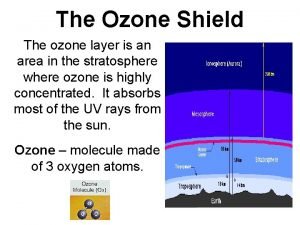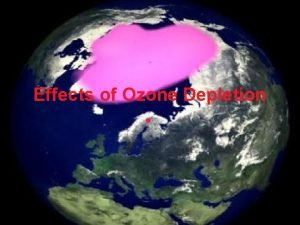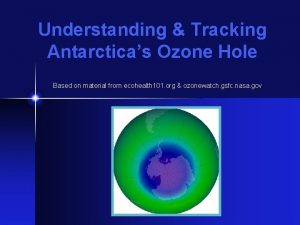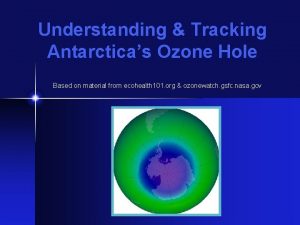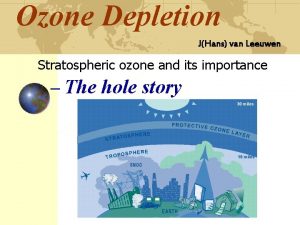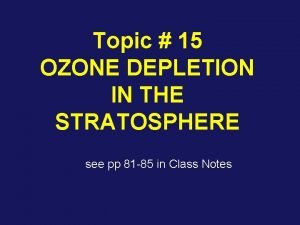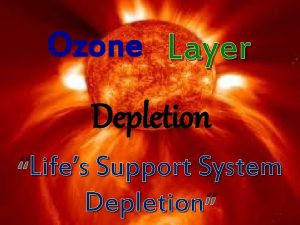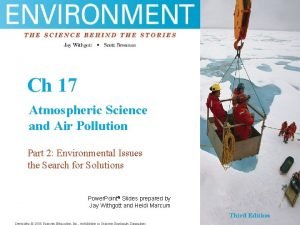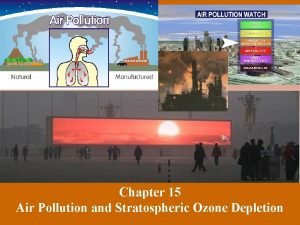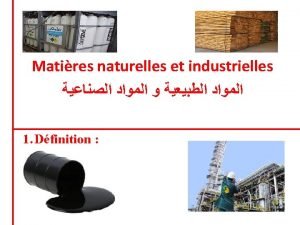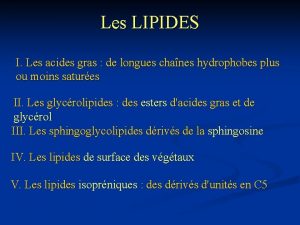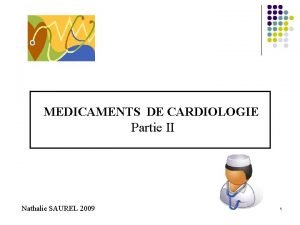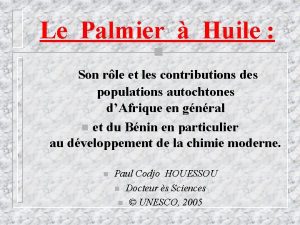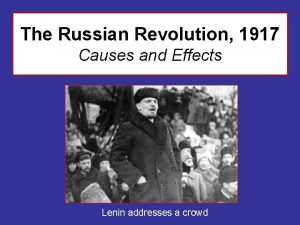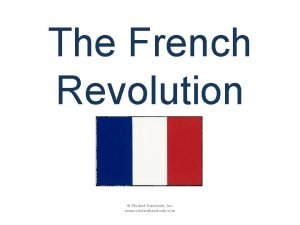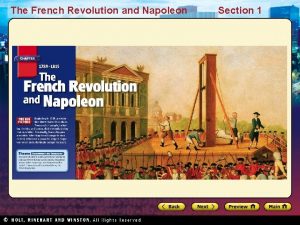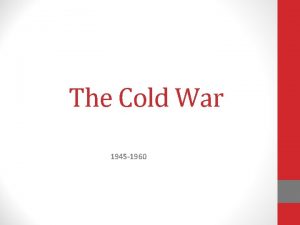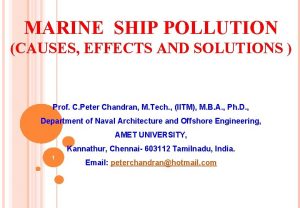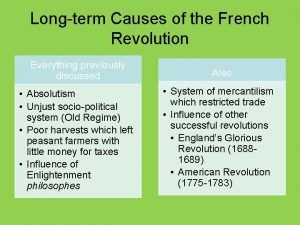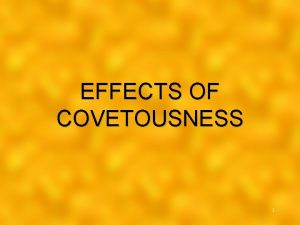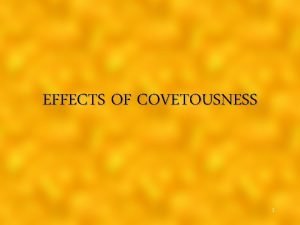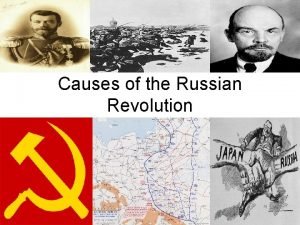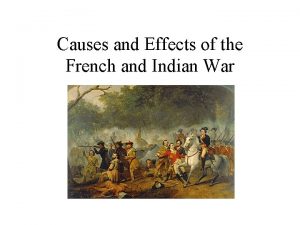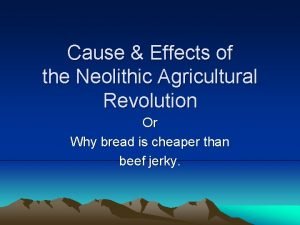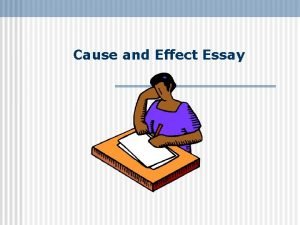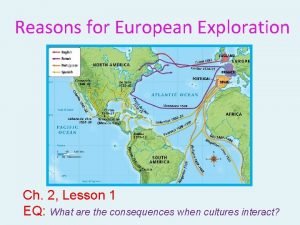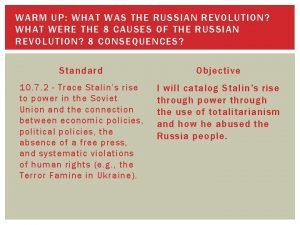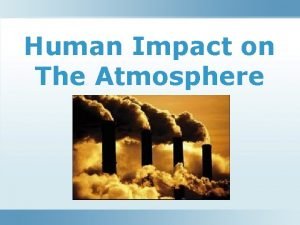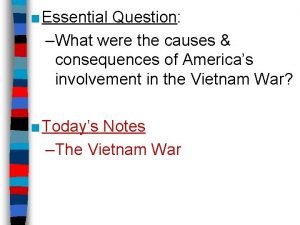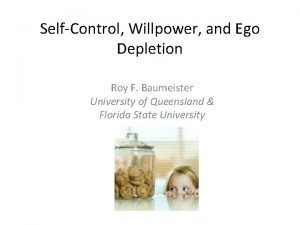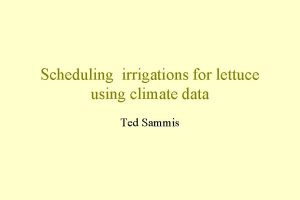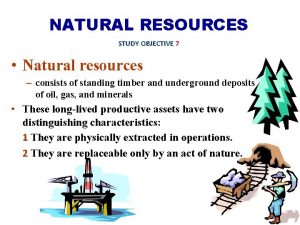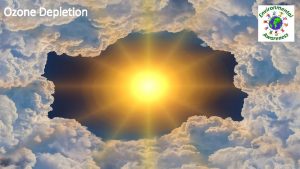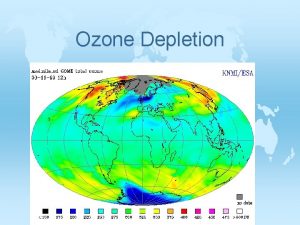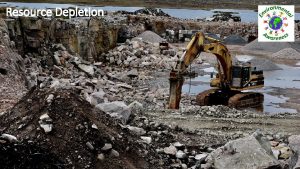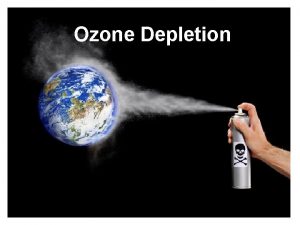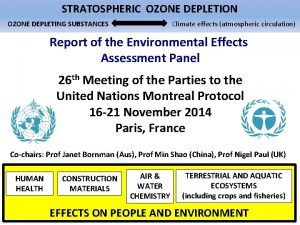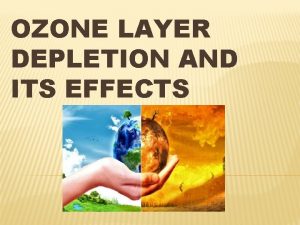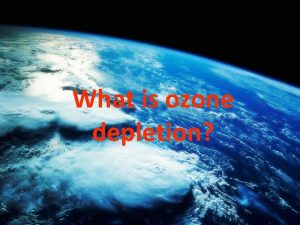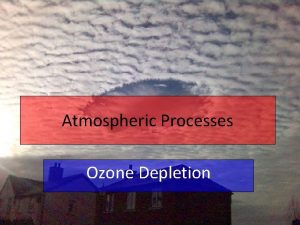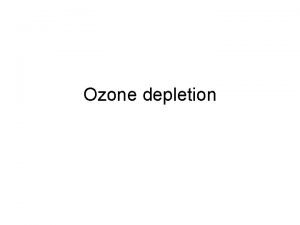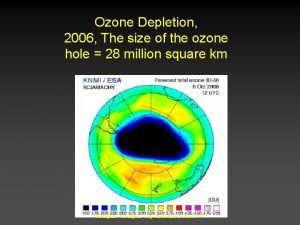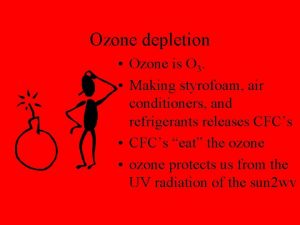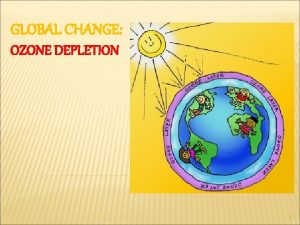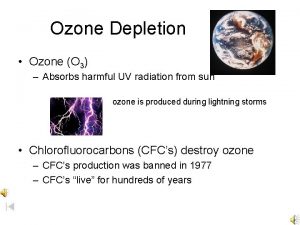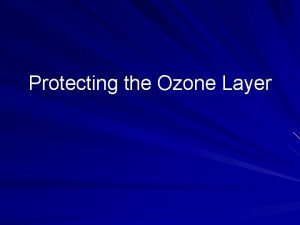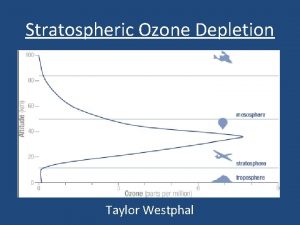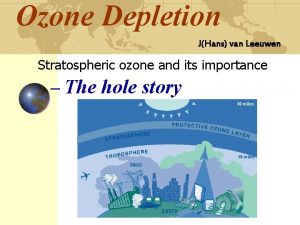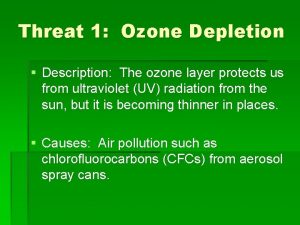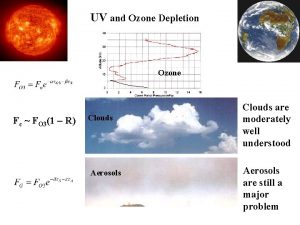Ozone depletion Causes Effects The name ozone derives

















































- Slides: 49

Ozone depletion Causes & Effects

The name ozone derives from Greek word ozein, that mean “To smell” also known as trioxygen. A. B. C. D. Inorganic molecule. Allotrope of oxygen Less stable than the diatomic allotrope. It is an irritating, pale-blue gas and toxic, even at low concentration.

Ozone is slightly soluble in water and much more soluble in inert non-polar solvents such as carbon tetrachloride CCl 4. At -193. 2°C it condenses to form a dark blue liquid, below − 193. 2°C it forms a violet-black solid.

In 1785, chemist M. V. Marum was conducting experiments involving electrical sparking above water when he noticed an unusual smell, a half century later,

Schonbein noticed the same pungent smell during a bolt of lightning. In 1839, he succeeded in isolating the gaseous chemical and named it "ozone", from the Greek word ozein.

Discovery of Ozone The formula for ozone, O 3, was not determined until 1865 by J. L. Soret and confirmed by Sochonbein in 1867

Structure of ozone Ø Molecule consisting of three oxygen. ØOzone is a bent molecule ØThe O – O distances are 127. 2 pm. ØThe O – O angle is 116. 78° ØResonance hybrid with two contributing structures.

Ozone type and Location Ozone has 2 type 1 - Bad ozone 2 - Good ozone

Low level ozone 1 - Bad ozone; Ø Located within 10 Kilometer in troposphere Ø Usually present in troposphere in form of smog Ø Contributes to global warming Ø atmospheric pollutant.

Low level ozone Formed by the reaction of hydrocarbons and nitrogen oxides ( presence of sun light) that react to form ozone directly. The atmospheric lifetime of tropospheric ozone is about 22 days.

Ozone acts as a greenhouse gas, absorbing some of the infrared energy emitted by the earth. Because of its short-lived nature, Bad ozone does not have strong global effects

Stratospheric ozone 1 - Good ozone Present in the stratosphere, it absorbs some of the harmful ultra-violet (UV) radiation from the sun (at wavelengths between 240 and 320 nm, 1 nm = 10 -9 m). Most of the Earth’s atmosphere ozone (about 90%) is found in the stratosphere.

Dobson unit The Dobson spectrophotometer for measuring ozone, invented by the English scientist George. M. B. Dobson in 1927.

Dobson unit Total ozone values range from about 290 to 310 DU over the globe A network of 85 Dobson stations were established to measure global ozone. Measurement is also conducted by rockets & UVphotometer.

ozone concentrations Typical ozone concentrations: A- In very clean troposphere: 10 – 40 ppb. B- In stratosphere about 10 ppm.


In 1930 S. Chapman, a British scientist, proposed a theory of the formation of ozone in the stratosphere (known as Chapman mechanism). 1. Molecular oxygen absorbs solar radiation (wavelength < 242 nm) and form two atom of oxygen. O 2 + hν ---------> O + O 2. The oxygen atom, O, reacts rapidly with O 2 in the presence of UV light to form ozone: O 2 + O --------> O 3

Chapman mechanism 1. Ozone absorbs solar radiation (in the wavelength range of 240 to 320 nm) and decomposes back to O 2 and O: O 3 + hν --------> O 2 + O 2. Additionally, ozone can react with atomic oxygen to regenerate two molecules of O 2: O 3 + O -------> O 2 + O 2

Ozone Depleting Chemicals Ozone layer is being destroyed by a group of manufactured chemicals that are called ODS or Ozone -Depleting Substances. (CFC 11, CFC 12) Ø Chlorofluorocarbons (Halon-1211, halon-1301, halon-2402) Ø Halons (CCI 4) Ø Carbon tetrachloride Ø Hydrogen chloride (HCl) Ø Methyl bromide Ø Methyl chloroform (CH 3 Br, CH 3 Cl) (CH 3 CCl 3)

Uses of CFCs These chemicals invented in the 1920. Ø Air Conditioners Ø Refrigerators Ø Spray cans Ø Cleaners for electronic parts Ø Sterilizing medical instruments

Catalytic Ozone destruction Cycle Nitrogen mono xide react with ozone to form nitroge di oxide and oxygen molecule. In next step Nitrogen dioxide react with oxygen atom to form nitrogen mono oxide and oxygen molecule 1 - NO + O 3 → NO 2 + O 2 2 - O + NO 2 → NO + O 2

Catalytic Ozone destruction Cycle

Ø Chlorofluorocarbons are not "washed" back to Earth by rain. Ø Not destroyed in reactions with other chemicals. Ø They can remain in the atmosphere from 20 to 120 years or more.

Natural causes of ozone depletion Volcanoes release large amounts of chlorine. Chlorofluorocarbons or CFCs are non-toxic, non-flammable and non-carcinogenic. They contain F, Cl and C atoms.

Ozone hole

Ozone hole ØAny area where ozone present below 220 DU that area is called ozone hole. ØAntarctic Ozone Hole was discovered in 1985 Ø 20 -30% loss of the ozone

What’s Eating the Ozone Scientists in the 1960 s realized that something was going wrong in the ozone layer. They soon figured out that human actions were damaging Earth's shield against harmful radiation

Ozone hole

Atmospheric chemist Susan Solomon suspected that some unknown chemical like CFCs or CFC products were causing ozone losses. Solomon and Garcia proposed reactions that PSC clouds could not only released free ozone-destroying chlorine, but also tie up the chemicals that could neutralized chlorine radical like nitrogen dioxide Researchers Susan Solomon Rolando Garcia

Ozone Hole Formation

Polar vortex. In the wintertime over the South Pole the circulating cold and dense air form cloud called the polar vortex.

Recipe for the Ozone Hole Formation 1) Polar vortex is formed in winter -90°C. 2) Nitric acid and water are frozen to form violet clouds (PSC). 3) In spring when UV light fall on PSC, active chlorine radical generated which deplete ozone.

1) HCl + Cl. ONO 2 → HNO 3 + Cl 2 2) Cl 2 + sunlight → Cl + Cl 3) 2 Cl + O 3 → 2 Cl. O + 2 O 2 4) 2 Cl. O + 2 O → 2 Cl + 2 O 2


Effects on Human ØSunburn. ØSkin cancer. ØPremature aging ØWrinkling of skin ØImmune system damage ØCancer of the cornea

Effects on Plants Ø Reduces productivity Ø Damages DNA ØAlters nitrogen metabolism

Effects on Plants ØAlter both the time of flowering & number of flowers Ø inhibition of photosynthesis

Effects on Amphibians ØCauses damage to many species of amphibians at any stage of their life cycle from egg to adult. Ø Affects growth and development in larvae. ØCauses �(1) Changes in behavior � (2) Become vulnerable to disease and death (4) causes retinal damage and blindness

Effects on Marine Ecosystems High exposure to UV radiation can. • Reduce phytoplankton numbers. • Damage the early developmental stages of fish and other marine life.

Effects on Materials ØDegradation of outdoor paints and plastics. ØIncreased acid deposition


Montreal Protocol The Montreal Protocol is a international agreement designed to protect the stratospheric ozone layer in 1987. The Montreal Protocol says that the production and consumption of compounds that deplete ozone are to be phased out till 2030.

The Future of the Ozone Hole As a result of the Montreal Protocol, atmospheric concentrations of some ozone-depleting substances, such as CFC-11, have begun to decline

ØEnvironmental Protection (Ozone Protection) Policy 2000 v. The aims of this policy to minimize the discharge of ozone -depleting substances into the environment. Ø United Nations Environment Programme v. Has published several assessments of the environmental effects of ozone depletion 2002.

Current Situation of ozone in Pakistan 1. Pakistan is located in an area with values of ozone layer around 300 Dobson units. 2. Pakistan does not manufacture any ozone depleting substances 3. CFC-12, Halon, Carbon tetrachloride (CCl 3), Methyl bromide are used in different industries

International Day for the Preservation of the Ozone Layer 16 September

Prevention of ozone depletion üAlways use lead free fuels. üAvoid smoking. üUse of catalytic converter in vehicles. üUse eco-friendly household cleaning products. üReduce use of dangerous nitrous oxide

Thanks

Refferences: Allen, D. J. , S. Nogues, and N. Baker. 1998. Ozone depletion and increased UV-B radiation: is there a real threat to photosynthesis? Journal of Experimental Botany. Vol. 49, No. 328, pp. 1775 – 1788. Executive: summary: Scientific Assessment of Ozone Depletion: 1994, World Meteorological Organization, Geneva, [World Meteorological Organization Global Ozone Research and Monitoring Project – Report No. 37]. Antarctic Ozone Bulletin: 2005, World Meteorological Organization, 2006. [Antarctic Ozone Bulletin No 8/2005 Winter/spring summary] Bojkov, R. D. , V. E. Fioletov. 1996. Total ozone variations in the tropical belt: An application for quality of ground based measurements. Meteorology and Atmospheric Physics, Springer Britt, A. B. 2000. Plant Biology: An unbearable beating by light? Nature. 406, 30 – 31. Descamps, F. J. , E. Martens, P. Proost, S. Starckx, P. E. Vanden. Steen, J. Van. Damme and G. Opdenakker. 2005. The FASEB Journal. 19: 29 -35. Progress Report 2003. United Nations Environmental programme, Environmental Effects Assessment Panel 2003. [The Royal Society of Chemistry and Owner Societies 2004] Photochemistry and Photobiology Science 2004, 3, 1 – 5.
 Negative effects of ozone layer depletion
Negative effects of ozone layer depletion Ozone depletion effects on humans
Ozone depletion effects on humans Ozone layer
Ozone layer Ozone layer depletion introduction
Ozone layer depletion introduction Stratospheric ozone depletion
Stratospheric ozone depletion Ozone depletion diagram
Ozone depletion diagram Cause of ozone depletion
Cause of ozone depletion Ozone layer depletion
Ozone layer depletion Ozone layer depletion
Ozone layer depletion Ozone depletion pictures
Ozone depletion pictures Ground level ozone effects
Ground level ozone effects Les dérives du pétrole sont des matériaux synthétiques
Les dérives du pétrole sont des matériaux synthétiques Polyisopréniques
Polyisopréniques Intertextuality julia kristeva
Intertextuality julia kristeva Nathalie saurel
Nathalie saurel Produits dérivés du palmier à huile
Produits dérivés du palmier à huile In a bureaucracy a manager's formal authority derives from
In a bureaucracy a manager's formal authority derives from Draw three noncollinear points j k and l
Draw three noncollinear points j k and l Causes and effects of the russian revolution
Causes and effects of the russian revolution Causes and effects of french revolution
Causes and effects of french revolution Immediate cause of french revolution
Immediate cause of french revolution Causes and effects of french revolution
Causes and effects of french revolution Cold war cause and effects
Cold war cause and effects American revolution strengths and weaknesses
American revolution strengths and weaknesses French revolution causes and effects
French revolution causes and effects Pollution causes effects and solutions
Pollution causes effects and solutions French revolution causes and effects
French revolution causes and effects Marine noise pollution
Marine noise pollution Long term causes french revolution
Long term causes french revolution What was the social cause of french revolution
What was the social cause of french revolution Forest fires causes and effects
Forest fires causes and effects Causes and effects of covetousness
Causes and effects of covetousness Covetousness
Covetousness Causes and effects of the russian revolution
Causes and effects of the russian revolution Causes and effects of the french and indian war
Causes and effects of the french and indian war Causes of the persian war
Causes of the persian war Cause and effect of agricultural revolution
Cause and effect of agricultural revolution Block organization cause and effect essay
Block organization cause and effect essay Causes and effects of european exploration
Causes and effects of european exploration Russian revolution causes and effects
Russian revolution causes and effects Impacts of inflation
Impacts of inflation Reason of acid rain
Reason of acid rain What were the causes and effects of the vietnam war
What were the causes and effects of the vietnam war Ultimate and proximate causes of behaviour
Ultimate and proximate causes of behaviour Proximate causation vs ultimate causation
Proximate causation vs ultimate causation Ego depletion
Ego depletion Management allowed depletion
Management allowed depletion Depletion formula
Depletion formula Objectives of irrigation water management
Objectives of irrigation water management Nmos inverter with depletion load
Nmos inverter with depletion load
